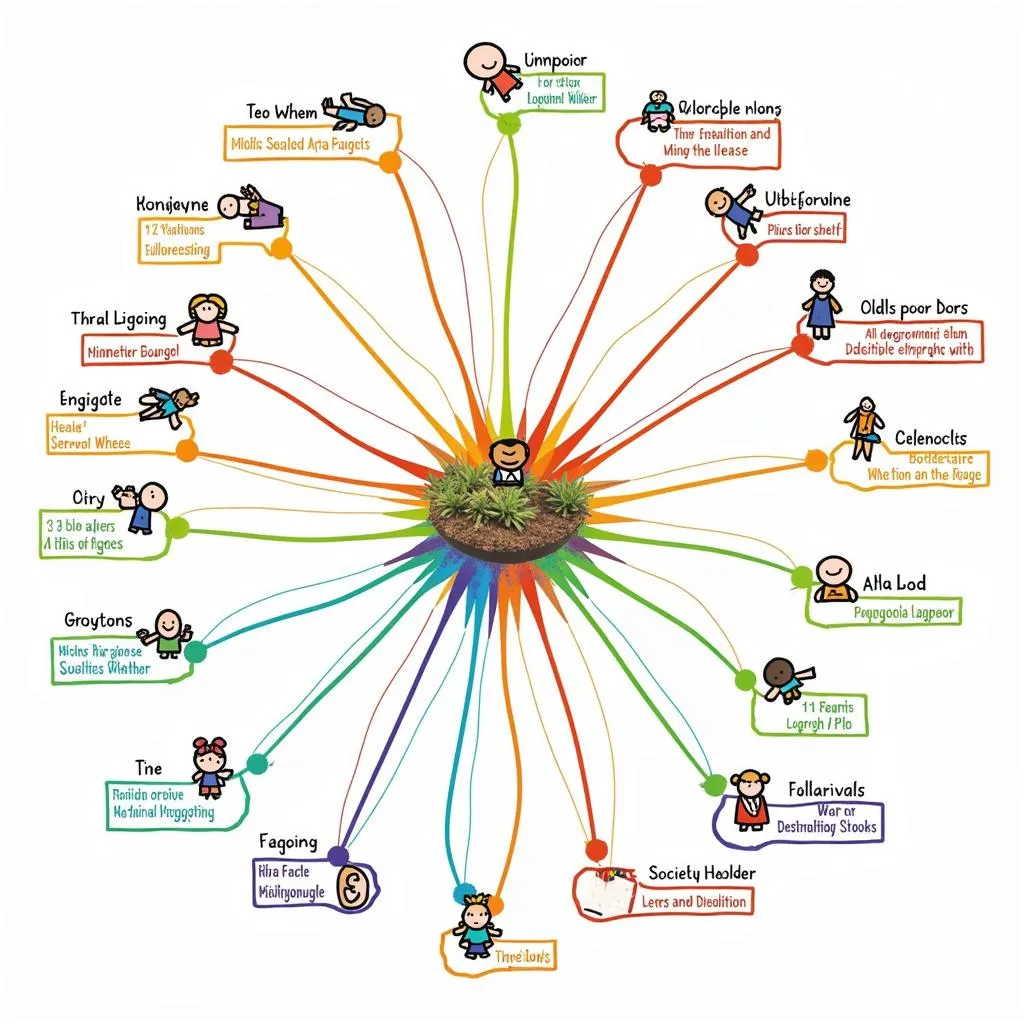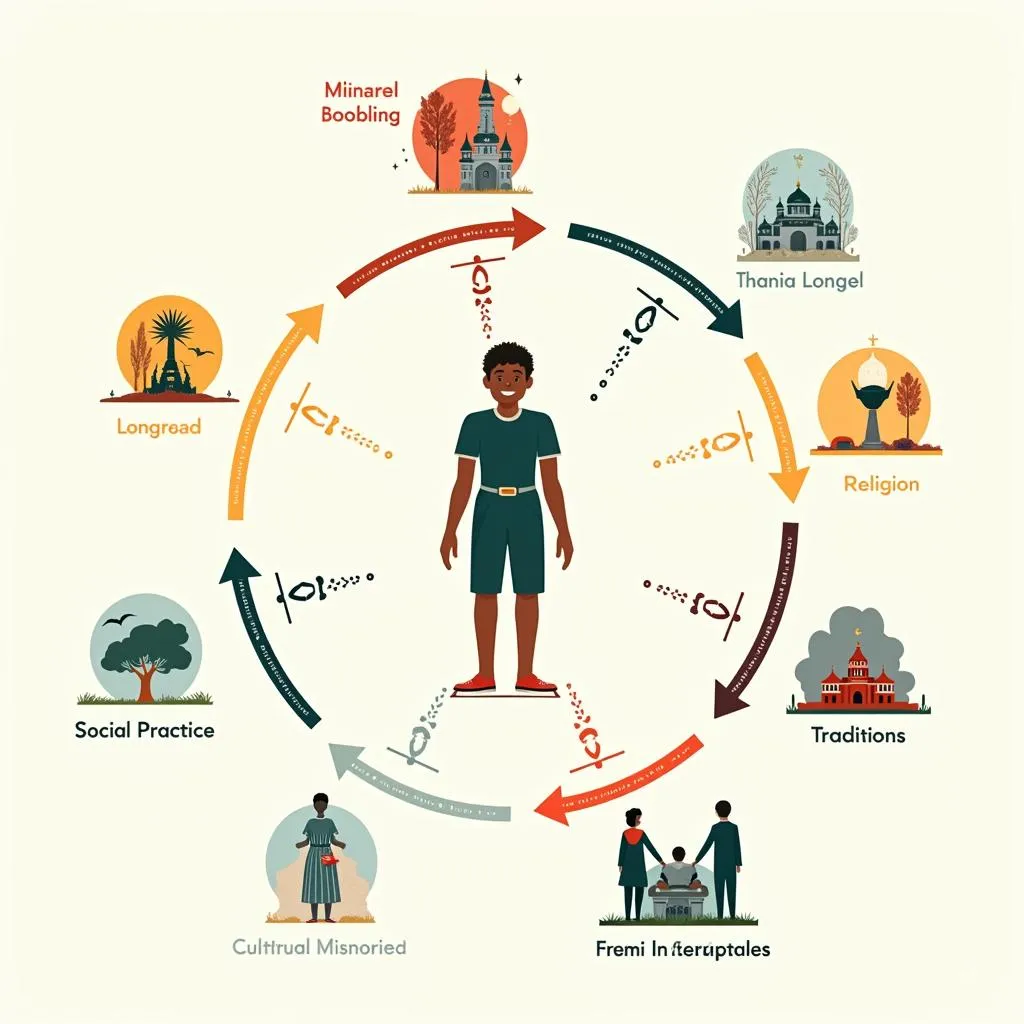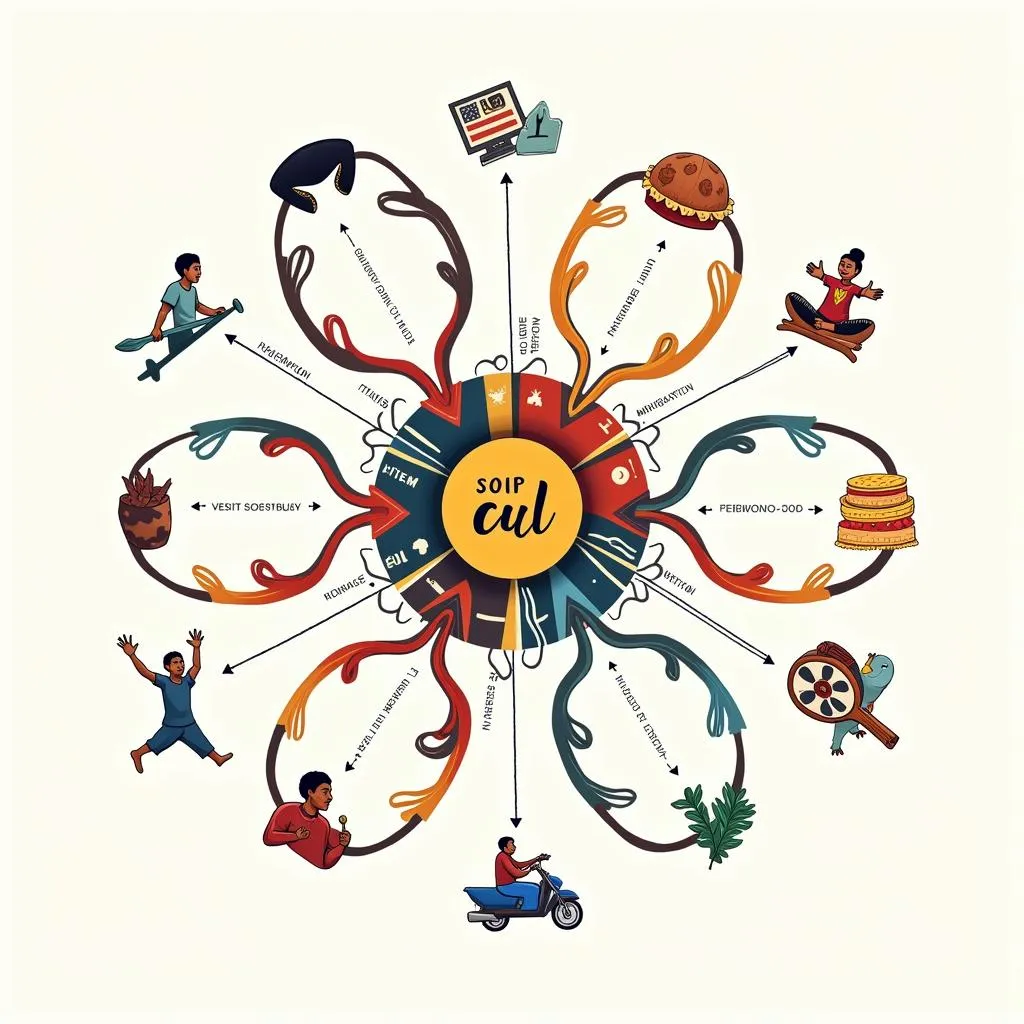The IELTS Reading test can be challenging, especially when it comes to understanding complex topics like cultural studies. One effective method to enhance comprehension is through the use of infographics. Let’s explore this concept further with a sample IELTS Reading test focused on “The use of infographics in teaching cultural studies.”
Passage 1 – Easy Text
Cultural studies is a diverse and interdisciplinary field that examines how culture shapes and is shaped by various aspects of society. In recent years, educators have increasingly turned to infographics as a powerful tool for teaching cultural studies concepts. Infographics, which combine visual elements with text to present information in a concise and engaging manner, have proven particularly effective in helping students grasp complex ideas and relationships within cultural studies.
One of the primary advantages of using infographics in cultural studies education is their ability to synthesize large amounts of information into easily digestible formats. For example, an infographic might visually represent the interconnections between different cultural influences on a particular society, allowing students to quickly grasp relationships that might be difficult to understand through text alone. This visual approach can be especially beneficial for visual learners who may struggle with traditional text-based methods of instruction.
Moreover, infographics can help students develop critical thinking skills by encouraging them to analyze and interpret visual data. By presenting information in a visually appealing and structured manner, infographics can stimulate cognitive processes and enhance retention of key concepts. This approach aligns well with the goals of cultural studies, which often involve examining complex societal issues from multiple perspectives.
 Infographics in Cultural Studies Education
Infographics in Cultural Studies Education
Questions 1-5
Do the following statements agree with the information given in the passage? Write
TRUE if the statement agrees with the information
FALSE if the statement contradicts the information
NOT GIVEN if there is no information on this
- Infographics are only useful for teaching simple concepts in cultural studies.
- Visual learners may benefit more from infographics than from traditional text-based learning methods.
- The use of infographics in education is a recent development.
- Infographics can help students develop critical thinking skills.
- All students prefer infographics to traditional teaching methods.
Questions 6-10
Complete the sentences below. Choose NO MORE THAN TWO WORDS from the passage for each answer.
- Cultural studies is an ___ field that examines the relationship between culture and society.
- Infographics combine ___ elements with text to present information effectively.
- One advantage of infographics is their ability to ___ large amounts of information.
- Infographics can stimulate ___ processes and enhance retention of key concepts.
- Cultural studies often involve examining complex societal issues from ___ perspectives.
Passage 2 – Medium Text
The integration of infographics into cultural studies curricula has revolutionized the way educators approach complex topics such as globalization, identity formation, and cultural hybridity. By leveraging the power of visual storytelling, infographics enable students to navigate the intricate web of cultural interactions and influences that shape our modern world. This innovative approach not only enhances comprehension but also fosters a more nuanced understanding of cultural phenomena.
One of the key benefits of using infographics in cultural studies is their ability to transcend language barriers. In an increasingly globalized world, where classrooms often comprise students from diverse linguistic backgrounds, visual representations can serve as a universal language. This is particularly valuable when discussing concepts that may be difficult to articulate in words alone, such as the subtle interplay between tradition and modernity in evolving societies.
Furthermore, infographics can effectively illustrate the multifaceted nature of cultural identity. By visually mapping the various factors that contribute to an individual’s or a community’s cultural identity – such as language, religion, historical experiences, and social practices – students can gain a more comprehensive understanding of the complexity of cultural formation. This visual approach can help break down stereotypes and promote a more inclusive and empathetic perspective on cultural diversity.
The use of animation in teaching social issues is another innovative method that complements infographics in cultural studies education. Both techniques share the goal of making complex topics more accessible and engaging for students.
Infographics also prove invaluable when exploring the intricate dynamics of cultural exchange and influence. For instance, a well-designed infographic can visually represent the flow of cultural elements – such as music, fashion, or culinary traditions – across geographical boundaries, illustrating the concept of cultural diffusion in a way that text alone cannot achieve. This visual representation can help students grasp the interconnectedness of global cultures and the processes that drive cultural change.
 Cultural Identity Infographic
Cultural Identity Infographic
Moreover, the use of infographics in teaching cultural studies aligns well with contemporary pedagogical approaches that emphasize active learning and student engagement. By encouraging students to create their own infographics as part of their coursework, educators can foster creativity, critical thinking, and information literacy skills. This hands-on approach not only deepens students’ understanding of cultural concepts but also equips them with valuable digital literacy skills that are increasingly important in today’s information-driven society.
Questions 11-14
Choose the correct letter, A, B, C, or D.
-
According to the passage, infographics in cultural studies education:
A) Are only useful for simple topics
B) Help students understand complex cultural interactions
C) Replace traditional teaching methods entirely
D) Are mainly used for language learning -
The ability of infographics to transcend language barriers is particularly useful because:
A) It saves time in translation
B) It allows for larger class sizes
C) It helps in classrooms with linguistically diverse students
D) It eliminates the need for verbal explanation -
Infographics can help break down stereotypes by:
A) Simplifying cultural concepts
B) Focusing only on similarities between cultures
C) Illustrating the complexity of cultural identity
D) Avoiding controversial topics -
Creating infographics as coursework can help students develop:
A) Artistic skills only
B) Digital literacy skills
C) Language proficiency
D) Mathematical abilities
Questions 15-19
Complete the summary below. Choose NO MORE THAN TWO WORDS from the passage for each answer.
Infographics have transformed the teaching of cultural studies by providing a visual approach to complex topics. They are particularly effective in illustrating the (15) of cultural identity and the processes of cultural exchange. This method is especially valuable in (16) classrooms, where visual representations can serve as a universal language. Infographics can also help students understand the (17) between tradition and modernity in changing societies. By encouraging students to create their own infographics, educators can promote (18) and develop important skills for an (19) ___-driven society.
Passage 3 – Hard Text
The proliferation of infographics in cultural studies pedagogy has precipitated a paradigm shift in how educators approach the dissemination of complex cultural theories and concepts. This visual modality of knowledge transfer has proven particularly efficacious in elucidating the intricate tapestry of cultural phenomena that characterizes our increasingly interconnected global society. The judicious application of infographics in this domain not only facilitates enhanced comprehension but also engenders a more profound and nuanced appreciation of cultural diversity and its myriad manifestations.
One of the most salient advantages of employing infographics in cultural studies education lies in their capacity to delineate abstract concepts with remarkable clarity. For instance, the notoriously abstruse notion of cultural hegemony, as propounded by Antonio Gramsci, can be rendered more accessible through a well-crafted infographic that visually maps the complex power dynamics and ideological structures that underpin this theoretical construct. Such visual representations can elucidate the subtle ways in which dominant cultural norms are perpetuated and contested, thereby fostering a more critical engagement with societal power structures.
Moreover, infographics serve as an invaluable tool in explicating the multifaceted nature of cultural hybridity – a concept that has gained significant traction in contemporary cultural studies discourse. By visually depicting the various cultural elements that coalesce to form hybrid identities, infographics can effectively illustrate the fluid and dynamic nature of cultural formation in an era of globalization. This visual approach can help students navigate the complexities of transnational cultural flows and their impact on individual and collective identities.
The efficacy of infographics in cultural studies education is further amplified by their ability to contextualize historical and contemporary cultural phenomena within broader socio-political frameworks. For example, an infographic charting the evolution of cultural attitudes towards gender and sexuality over time can provide students with a comprehensive overview of the interplay between social movements, legislative changes, and shifting cultural norms. This holistic perspective is crucial for developing a nuanced understanding of how cultural values and practices are shaped by and, in turn, shape societal structures.
The influence of social media on classroom culture is another area where infographics can be particularly effective in illustrating complex relationships and trends.
Furthermore, the utilization of infographics in cultural studies pedagogy aligns seamlessly with the field’s emphasis on interdisciplinary approaches to knowledge production. By synthesizing data and concepts from diverse disciplines such as sociology, anthropology, media studies, and political science, infographics can facilitate a more holistic understanding of cultural phenomena. This interdisciplinary visual representation can help students discern the intricate connections between various facets of culture and society, fostering a more comprehensive and critical analytical approach.
 Cultural Hybridity Infographic
Cultural Hybridity Infographic
It is imperative, however, to acknowledge the potential limitations and challenges associated with the use of infographics in cultural studies education. The inherent complexity of many cultural theories and concepts may resist simplification, and there is a risk of oversimplification or misrepresentation when attempting to distill nuanced ideas into visual formats. Educators must therefore exercise judicious discretion in the design and application of infographics, ensuring that they complement rather than supplant more traditional modes of instruction.
In conclusion, the judicious integration of infographics into cultural studies curricula holds immense potential for enhancing student engagement and comprehension of complex cultural phenomena. By leveraging the power of visual representation, educators can foster a more nuanced and critical understanding of the multifaceted nature of culture in our globalized world. However, it is crucial to approach this pedagogical tool with a discerning eye, recognizing both its strengths and limitations in the context of cultural studies education.
Questions 20-23
Choose the correct letter, A, B, C, or D.
-
According to the passage, infographics in cultural studies education:
A) Completely replace traditional teaching methods
B) Are only useful for simple concepts
C) Help explain complex cultural theories
D) Are mainly used for historical data -
The concept of cultural hegemony can be better understood through infographics by:
A) Simplifying it to basic terms
B) Visually mapping power dynamics and ideological structures
C) Focusing only on dominant cultures
D) Ignoring societal power structures -
Infographics are particularly useful in explaining cultural hybridity because they:
A) Provide a static view of culture
B) Focus only on traditional cultural elements
C) Illustrate the dynamic nature of cultural formation
D) Simplify cultural identity to a single factor -
The passage suggests that the use of infographics in cultural studies:
A) Is without any limitations
B) Should completely replace text-based learning
C) May risk oversimplification of complex ideas
D) Is only effective for visual learners
Questions 24-26
Complete the sentences below. Choose NO MORE THAN THREE WORDS from the passage for each answer.
- Infographics can help students understand the impact of transnational cultural flows on and identities.
- The use of infographics aligns with cultural studies’ emphasis on ___ approaches to knowledge production.
- Educators must use ___ when designing and applying infographics in cultural studies education.
Questions 27-30
Do the following statements agree with the claims of the writer in the passage? Write
YES if the statement agrees with the claims of the writer
NO if the statement contradicts the claims of the writer
NOT GIVEN if it is impossible to say what the writer thinks about this
- Infographics are the most effective method for teaching all aspects of cultural studies.
- The use of infographics in cultural studies education can foster critical engagement with societal power structures.
- Infographics should completely replace traditional modes of instruction in cultural studies.
- The integration of infographics in cultural studies curricula can enhance student engagement with complex cultural phenomena.
Answer Key
-
FALSE
-
TRUE
-
TRUE
-
TRUE
-
NOT GIVEN
-
interdisciplinary
-
visual
-
synthesize
-
cognitive
-
multiple
-
B
-
C
-
C
-
B
-
multifaceted nature
-
linguistically diverse
-
interplay
-
creativity
-
information
-
C
-
B
-
C
-
C
-
individual, collective
-
interdisciplinary
-
judicious discretion
-
NOT GIVEN
-
YES
-
NO
-
YES
By practicing with these sample questions and understanding the use of infographics in teaching cultural studies, you can improve your IELTS Reading skills and expand your knowledge of this fascinating subject. Remember to analyze the visual elements in infographics carefully, as they often contain valuable information that can help you answer questions more accurately.


